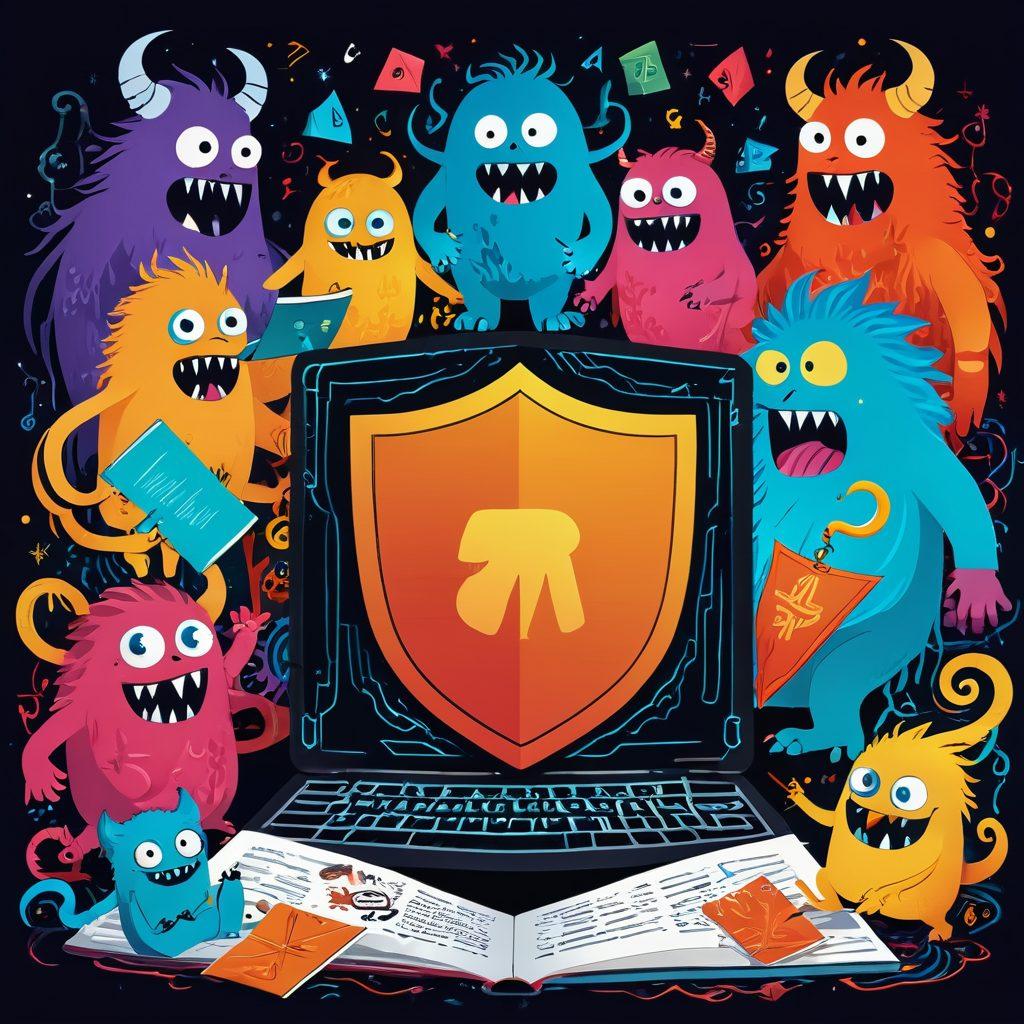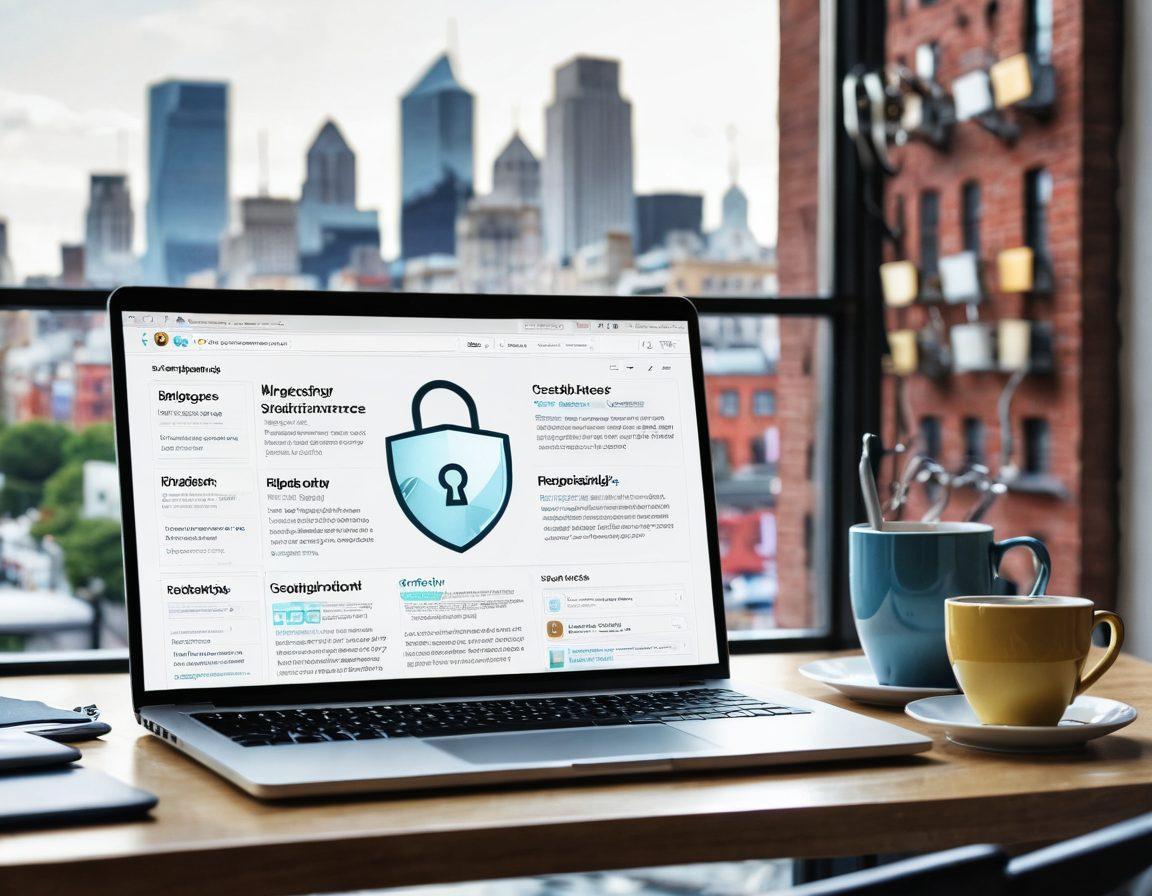Navigating the Blogosphere: A Guide to Secure Blogging and XSS Awareness
In an age where the internet acts as a colossal repository of knowledge and personal expression, more and more individuals are stepping up to share their thoughts, experiences, and expertise through blogging. Whether you're writing an online journal, a digital diary, or a personal blog, embedding security into your approach is paramount. After all, each blog post is not just a reflection of your ideas but also a potential target for cyber threats if not properly secured. So, how do you navigate the blogosphere while ensuring your content platform remains a safe haven for your thoughts?
Imagine you sit down to write an article on your favorite memories, only to discover that someone has editorial control over your blogsite. Scary, right? This is why understanding the risks—including XSS exploits or cross-site scripting vulnerabilities—is crucial in today’s digital age. With the right security best practices, you can effectively safeguard your web log and keep it safe from intruders. Cybersecurity may seem intricate, but all it requires is a bit of knowledge, diligence, and a proactive mindset.
As you embark on your blogging journey, consider conducting a vulnerability assessment of your content platform. Ask yourself, "What potential risks are lurking behind my posts?" Familiarizing yourself with common security vulnerabilities—like SQL injections and cross-site scripting—will help strengthen your defense. Remember, there’s a well-known saying in the cybersecurity realm: "An ounce of prevention is worth a pound of cure." So, investing time in learning about these risks could spare your blogsite from potential headaches down the road!
Now, let’s discuss some actionable steps. First, ensure that your web development tools are regularly updated, and always back up your digital diary to mitigate the risks of data loss. Second, enable two-factor authentication (2FA) for added security. This extra layer can often deter hackers before they even get a chance to tamper with your articles. Lastly, stay informed about the latest in web security and XSS awareness—because knowledge is your best defense against cyber threats!
Ultimately, mastering secure blogging isn’t just about technical barriers; it’s also about creating a culture of safety among your readership. By sharing information on security best practices in your posts, you can advocate for a more resilient blogosphere. Inviting your audience to engage in discussions around risk management not only enriches your blog content but also fosters a supportive community. Remember, a secure blogger is an empowered blogger, ready to illuminate the world with their unique observations without the fear of cyber intrusion.
Unraveling XSS: Protecting Your Online Journal from Cyber Threats
In today's digital age, where your thoughts can be shared with the world at just the click of a button, maintaining a secure online journal is more critical than ever. The blogosphere is filled with opportunities to express oneself while connecting with like-minded individuals. However, with this freedom comes the responsibility to protect your digital diary from cyber threats, especially as attacks like cross-site scripting (XSS) become more prevalent. Have you ever wondered just how safe your blogging platform really is?
Imagine spending hours crafting a heartfelt article for your personal blog, only to discover that a crafty cybercriminal has exploited a vulnerability in your web log, injecting malicious scripts that can hijack your content. Sxss exploits are not just technical jargon—they are real threats that can render your blogsite compromised in the blink of an eye. This paints a stark picture of what could happen if XSS awareness is not a priority in your web development strategy. But worry not! With a little knowledge and some proactive measures, we can boost our blogging security.
First, let's discuss some security best practices that every blogger should adopt. It all begins with a thorough vulnerability assessment of your content platform. Regularly updating your web security features, plugins, and themes is paramount. Have you made it a habit to review and update your software? This approach significantly lowers the risk management associated with your online journal. Even if you have a minimalistic blog without advanced features, neglecting updates can be a gateway for attackers who are always on the lookout for security vulnerabilities.
Next, understanding the nature of XSS is crucial. Cross-site scripting can allow malicious actors to execute scripts in the context of a user's browser. This essentially means that they could manipulate your posts or even steal your readers’ information. Hence, ensuring that inputs (comments, contact forms, etc.) on your blog are sanitized can drastically reduce risks. As storytellers, we have to sweep our creative spaces clean of unwanted intruders. Are you prepared to take the steps needed to safeguard your content?
Lastly, consider the community aspect of blogging. Engaging in a cybersecurity blog or forums can help you stay ahead of the curve regarding recent threats and effective remedies. Don't forget—one of the strengths of the blogosphere is the vast array of resources and knowledge sharing available. Collaborating with other bloggers and exchanging tips on how to fortify your digital diary against XSS attacks can transform your blogging journey into a safer one. Do you have any insights or experiences to share? Together, we can weave a secure space for our thoughts and insights.
The Ultimate Guide to Blogging Responsibly in the Blogosphere: Security and Awareness
In today’s fast-paced digital age, where every thought can be recorded and shared instantly, the blogosphere has blossomed into a vibrant and evolving platform. Whether you’re keeping a digital diary, hosting a personal blog, or curating posts for a corporate content platform, blogging has become an essential tool for expression, narrative-sharing, and connecting with others. However, with great power comes great responsibility, especially when it comes to cybersecurity concerns and XSS awareness. So, how do we navigate this buzzing web log environment while ensuring our blogs remain secure and our readers stay safe?
Picture this: You’ve just published an article that you’ve poured your heart into—exciting anecdotes, stunning visuals, and valuable insights sprinkled throughout. But then, the unthinkable happens; an sneaky cybercriminal exploits a security vulnerability in your blogsite, all thanks to a cross-site scripting (XSS) attack. Suddenly, your audience is at risk, and your digital diary has turned into a potential trap. This is where our ultimate guide to blogging responsibly comes into play. Let’s dive deep into security best practices that everyone should implement in their blogging journey!
First, let’s talk about the significance of understanding XSS exploits. These attacks occur when an attacker injects malicious scripts into content from a trusted source. And here’s the kicker—this can happen even to the most seasoned bloggers! So, how do we defend ourselves? Begin with a sound risk management strategy. Regularly conduct vulnerability assessments on your web development frameworks. Be sure to use secure coding techniques and sanitize input data. This simple step can do wonders in keeping your blog safe from potential threats all while maintaining the integrity of your online journal.
Another crucial element in blogging securely is to stay updated. What is true today may not hold tomorrow; the blogosphere is ever-evolving. Reputable cybersecurity blogs serve as invaluable resources, providing insights into emerging threats and security vulnerabilities in real time. So, ask yourself: When was the last time you reviewed your blogging platform’s security updates? It’s time to prioritize staying informed! Embrace a proactive mindset as you navigate your blogging journey. After all, information is power—and when your content is secure, that power multiplies.
Lastly, community matters! Connect with fellow bloggers to share experiences and best practices surrounding XSS awareness and web security. Creating a safe blogging environment doesn’t just depend on your efforts; it’s a collective responsibility. Engage in discussion forums, attend blogging workshops, and don’t shy away from seeking advice. Together, we can transform the blogosphere into a secure haven for all. As you embark on your blogging journey, remember, every post you share is an opportunity to advocate for security awareness. How will you make your mark while keeping your readers safe?


